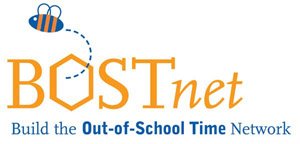Secretary Paul Reville announced at the October 9th All Means All Conference that the state had just announced the establishment of six regional Readiness Centers across the Commonwealth as a key strategy in Governor Patrick’s education agenda to improve teacher quality. According to a EOE press release, “Readiness Centers will help improve the theory and action of teaching by providing educators with greater access to proven instructional practices, proven practices in the use of student data to help inform instruction and increased and more focused professional development opportunities. For example, the Centers will provide teachers with assistance regarding curriculum development and alignment, including strategies for lesson planning and helping all students access complex content.”
“The establishment of the regional Readiness Centers will result in the development of a robust network of institutions and organizations focused on supporting the teaching profession,” said Education Secretary Paul Reville. “These Centers will have a significant impact on all aspects of our public education system including early education and care, elementary and secondary education and higher education, and unite them in common goals of dramatically improving the quality of teaching and addressing other critical education priorities.”
The six Readiness Centers and the primary partners are as follows.
1. Berkshire Readiness Center: Massachusetts College of Liberal Arts, Berkshire Community College and the Berkshire Compact for Higher Education.
2. Central Massachusetts Readiness Center: Fitchburg State College, Massachusetts Elementary School Principals’ Association and Worcester State College.
3. Greater Boston Readiness Center: Framingham State College, UMASS Boston, Wheelock College, Massachusetts Bay Community College and the Greater Boston Regional Collaboratives Organization.
4. Northeast Regional Readiness Center: Salem State College, UMASS Lowell, North Shore Community College, Middlesex Community College, Northern Essex Community College, Merrimack College, Endicott College and Gordon College.
5. Pioneer Valley Readiness Center: Westfield State College, UMASS Amherst, Hampshire Educational Collaborative and the Lower Pioneer Valley Educational Collaborative.
6. Southeastern Massachusetts Readiness Center: Bridgewater State College, UMASS Dartmouth, Bristol Community College, Cape Cod Community College, Massasoit Community College, Massachusetts Maritime Academy, Brockton Workforce Investment Board, New Bedford Workforce Investment Board, Southeast Collaboratives Regional Organization, Lighthouse Superintendents’ Group and the Lighthouse Assistant Superintendents’ Group.
There are few details about the specific functions and programs of these centers, and each will be developing a program plan over the coming year. There is also, at this time, no funding dedicated to the functioning of these centers. Despite these caveats, we see an important opportunity to integrate professional development opportunities for school age and youth workers through these centers. As the July 2009 Request for Responses noted, “The Readiness Centers will also serve as hubs for collaboration among local, regional, and state stakeholders including institutions of higher education, educational collaboratives, educational service providers, business and community partners, state agencies, and other stakeholders. The development of partnerships among these stakeholder will result in the delivery of more targeted, aligned, and coherent services to early education and out-of-school time programs, schools, districts, and communities.”
This is a great opportunity for OST leaders and advocates to push for more rigorous workforce development opportunities for OST educators and youth workers across the Commonwealth.
16 years ago
